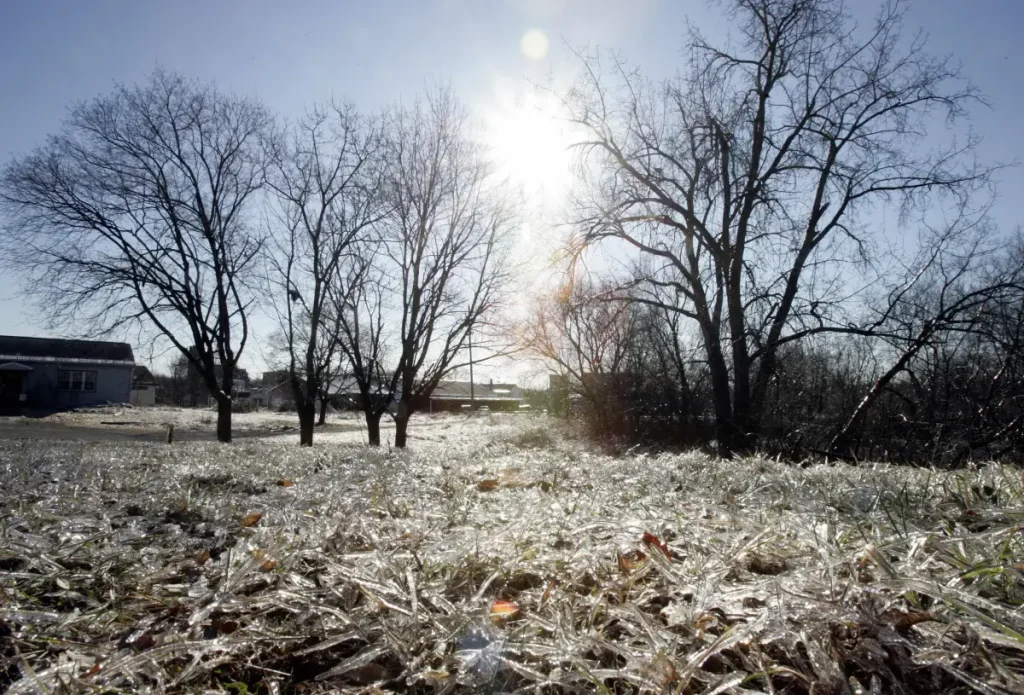Early Frost Advisory Hits Northern States as Fall Cold Front Advances
As autumn unfolds across the United States, an unseasonable cold snap is bringing frost advisories to parts of Pennsylvania, West Virginia, Ohio, and New York. This early taste of winter serves as a reminder that the seasons are shifting, with temperatures expected to drop into the 30s overnight on Thursday. The National Weather Service (NWS) has issued these advisories to help residents prepare for the potential impact on vegetation, agriculture, and infrastructure in affected areas.
The frost advisory, beginning either at midnight or 2 a.m. depending on location and expiring at 9 a.m. Thursday, covers specific counties across the four northern states. In Ohio, residents of Carroll, Harrison, Jefferson, Tuscarawas, Ashtabula Inland, Mahoning, Portage, Stark, and Trumbull Counties should prepare for frosty conditions. West Virginia’s advisory encompasses Taylor County, Northwest Pocahontas, Northwest and Southeast Randolph Counties, Northwest and Southeast Webster, Barbour, Brooke, and Upshur Counties. Pennsylvania’s Crawford and Southern Erie Counties will be affected, along with New York’s Erie, Genesee, Wyoming, Livingston, and Chautauqua Counties inland from Lake Erie. This early frost is particularly concerning for agricultural communities that may still have sensitive crops in the ground, as well as for gardeners with late-season plantings.
The timing of this cold snap highlights the transitional nature of fall weather patterns, where warm days can quickly give way to near-freezing nights. As the NWS Buffalo office noted on social media, residents can expect “dry with mild temperatures today giving way to a cooldown for Wednesday through Friday. Frost is likely inland from the immediate lakeshores Wednesday night and again Thursday night.” This pattern of temperature fluctuation is typical of autumn but arrives with particular intensity this year. Meanwhile, on the opposite side of the country, parts of California and Nevada are preparing for winter weather conditions of a different sort, with forecasts predicting up to six inches of snow in some areas this week—a stark reminder of how varied and extreme weather can be across the continental United States during seasonal transitions.
For residents in the frost advisory areas, the NWS Charleston, West Virginia office warned that “frost could harm sensitive outdoor vegetation” and advised that “sensitive outdoor plants may be damaged if left uncovered.” These seemingly simple warnings carry significant weight for the agricultural economy in these regions, where unexpected frost can damage crops and impact livelihoods. Farmers and gardeners are urged to take protective measures by covering sensitive plants or harvesting what they can before the cold sets in. Beyond agriculture, homeowners should also consider protecting outdoor plumbing fixtures that might be vulnerable to freezing temperatures, especially since many homes in these regions may not yet have been winterized so early in the season.
The early arrival of frost conditions raises broader questions about climate patterns and seasonal readiness. While frost in October isn’t unprecedented for these northern states, early cold snaps can catch communities unprepared, especially when they follow periods of milder weather that may have lulled residents into a false sense of seasonal security. Infrastructure preparedness becomes particularly important, as road conditions may deteriorate rapidly with frost formation, catching morning commuters off guard. Public service announcements from weather authorities serve as crucial reminders that despite the calendar date, weather patterns follow their own timeline, requiring adaptability and foresight from affected communities.
Looking ahead, residents and travelers in these regions are advised to stay vigilant and take appropriate protective measures until weather patterns stabilize. This means not only covering sensitive vegetation but also ensuring that vehicles are ready for potential frosty conditions during morning commutes. Weather experts emphasize the importance of monitoring official forecasts, especially as fall progresses and weather systems become increasingly dynamic. While this particular advisory is scheduled to expire Thursday morning, it serves as an important wake-up call that winter is approaching, and preparedness should be a priority for residents across the northern United States. As temperatures continue to fluctuate in the coming weeks, staying informed about weather developments will be essential for safely navigating the transition from fall to winter.














